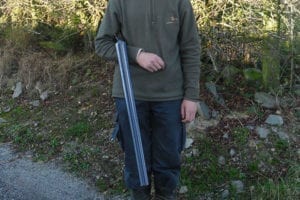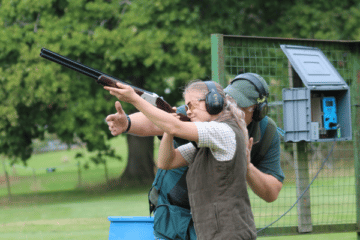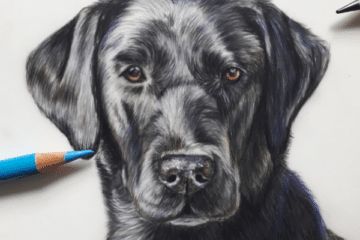When introducing myself as a Young Shots Journalist in December, I said I was keen on old guns and aspired to own a Damascus barrelled hammer gun. Damascus is the name for hand-forged barrels made of twisted iron and steel. They are easily distinguished by their intricate patterns, and were made in the 19th and early 20th centuries, before fluid steel barrels became the norm. While looking wistfully at the exquisite but expensive guns on the various shooting websites, I stumbled across a reasonably-priced Midland Gun Company hammer gun with Damascus barrels. Could this be the one?
I already knew about the Midland Gun Company, as we have one of their boxlocks in the gun cabinet. The boxlock was made about 100 years ago, and shoots very well. It is also a beautiful bit of craftsmanship, with finely-patterned Damascus barrels and a Greener-type cross-bolt that engages with a satisfying click – like shutting the door of a vintage Rolls Royce. You would have to pay tens of thousands for a hand-made gun nowadays, and creating Damascus barrels is something of a lost art. If the Midland hammer gun in the advert was in good condition, I might have found a gem!
But first, there needed to be some searching questions asked of the dealer. The main problem with older guns is the barrels. Over their lifetime, if they haven’t been cared for properly, the barrels can become so badly pitted that they are unsafe and can only be decommissioned and used as decorative ‘wall hangers’. The dealer was very helpful. He assured us that the hammer gun only had very minor marks in the barrels, and as it had been reproofed in 1992 there were no safety issues. The stock was in decent condition, without cracks, and the gun had probably been rejointed before reproof, so the barrels weren’t loose – another common problem with old guns.
Reassured that the gun was in good condition, it was time to strike a deal. That meant moving fast. My dad phoned the dealer to discuss details and just got in first, as two other buyers had expressed an interest. Buying a gun at a distance is a bit of a fuss, as you need to send the money and your certificate (for entering the details), and then arrange for the gun to be sent to a local firearms dealer to be collected. But all that went very smoothly and we got a Damascus hammer gun for the princely sum of £225.
With gun in our possession, it was time for a closer look. The barrels themselves are skelp, which is a type of Damascus used on lower grade guns. With skelp, a ribbon of iron was forged round a mandrel, to form a tube. Best quality Damascus is made by twisting multiple pieces of metal together before forging them into a tube, creating a beautiful swirling design. Skelp does not have the intricate patterns of true Damascus, but nevertheless makes strong barrels with a distinct pattern on them.
The hammers are in good working order. They are rebounding, meaning that they don’t rest on the strikers when uncocked, making the gun simpler to open and close and generally safer to use. The forend is very small compared to a modern gun, and semi-circular, following the shape of the end of the bar. This gives the gun a very elegant profile.
The barrel flats show two sets of proof marks, one from the initial proofs, and another from the 1992 reproof. The original marks suggest an 1887-1896 black powder proof. The earliest date it could be is 1889, as this was when the Midland Gun Company was founded. So the gun was almost certainly made in the last decade of Queen Victoria’s reign.
Although the Midland hammer gun was obviously one of the cheaper models available 120 years ago, it does have hand-engraved game scenes, with two partridges on one side and two pheasants on the other. These are quite sketchily done compared with the machine etching of modern guns, and are reminiscent of engraving on muzzle loaders from earlier in the 19th century. This gun also has a devil with a toasting fork stamped on the action flats, which means that it was a ‘Demon’ model, the Midland’s signature gun, named after the Demon Works, home to the Midland Gun Company. I had in my hands a piece of history. But how did it shoot?
To be continued…




